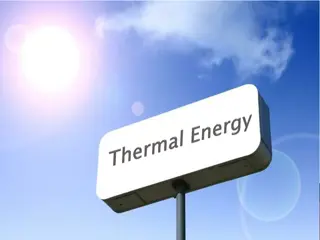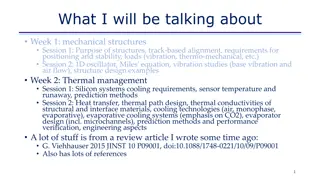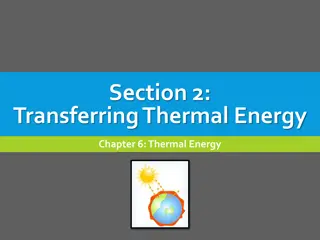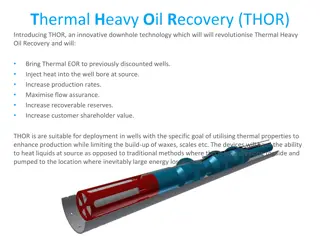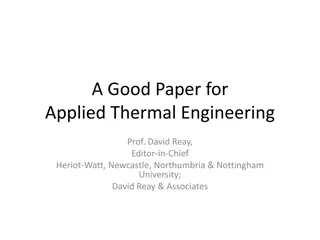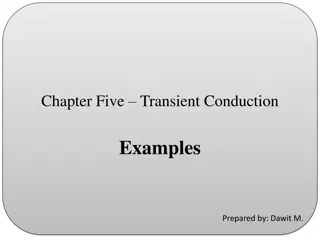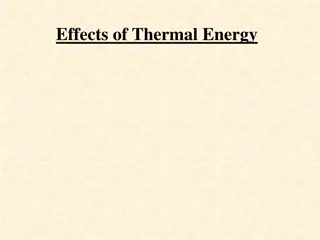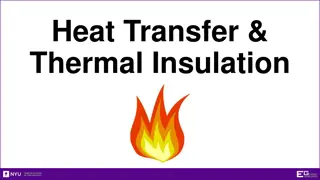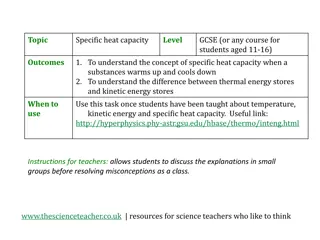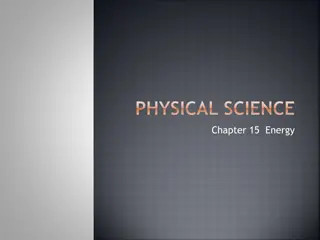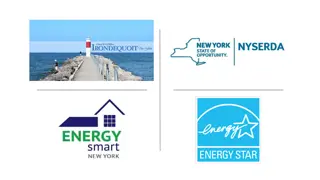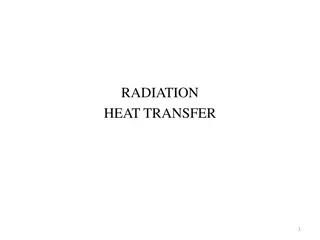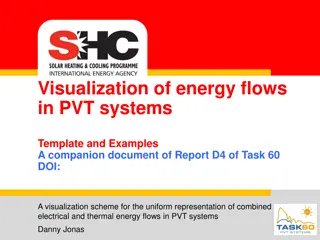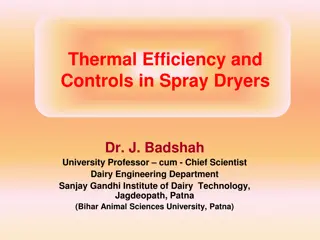Understanding Thermal Comfort Factors in Energy Management
Exploring key factors influencing human comfort in energy management, including metabolism, migration, heat flow mechanisms, and the role of clothing. Metabolism impacts perception of thermal comfort, while migration helps regulate core temperature. Heat flow mechanisms like convection, conduction, radiation, and evaporation play vital roles, influenced by factors like air movement, direct contact, radiant heat exchange, and phase changes. Proper understanding of these factors is crucial for managing energy efficiently.
Download Presentation

Please find below an Image/Link to download the presentation.
The content on the website is provided AS IS for your information and personal use only. It may not be sold, licensed, or shared on other websites without obtaining consent from the author. Download presentation by click this link. If you encounter any issues during the download, it is possible that the publisher has removed the file from their server.
E N D
Presentation Transcript
Introduction to Energy Management
Week 3 Managing Human Comfort
Thermal Comfort Factors Influenced by Metabolism Migration Heat flow Clothing
Metabolism Metabolism affects perception of thermal comfort Muscular activity Digestive process Daily cycle Health Age Gender
Migration Body attempts to maintain core temperature (98.6 F) by shifting blood flow Vasodilation Vasoconstriction
Heat Flow Multiple mechanisms Convection Conduction Radiation Evaporation
Heat Flow Convection Air movement caused by pressure and density changes Wind is formed by air moving from high to low pressure areas Warming air rises Cooling air falls
Heat Flow Conduction Caused by direct contact between two objects of different temperature Heat always flows from warm to cool
Heat Flow Radiation Radiant heat is exchanged by two objects of different temperatures Heat always flows toward cooler object Surface temperature controls interaction Seasonally variable
Radiant Heat Flow Season variations can change direction of radiant heat flow
Mean Radiant Temperature (MRT) MRT approach is used in Europe as a means to lower operating temperatures
Heat Flow Evaporation Water changes from liquid to gas and this phase change extracts heat Respiration Perspiration
Clothing Compounds and/or mitigates the effects of other mechanisms
Managing Human Comfort Defining Human Comfort Reciprocative Factors Diet, activity, clothing, exposure, etc. Physical Factors Air temperature, relative humidity, etc. Organismic Factors Age, sex, genetics, body type, etc.
STANDARDS Think of some building standards where the facility serves different activities
Managing Human Comfort Metabolism and Heat Loss from People Food metabolically converted to heat energy The body cools itself Evaporation (latent heat loss) Radiation (radiant heat loss) Convection (sensible heat loss)
Managing Human Comfort Evaporative Heat Loss Evaporating perspiration from the body Radiant Heat Loss MRT Mean radiant temperature Average temperature of surrounding surfaces Convective Heat Loss Loss of heat to surrounding air
Managing Human Comfort Factors Affecting Metabolic Heat Loss Evaporative losses depend on: Skin surface temperature of the person Relative humidity Dry bulb temperature of the air Velocity of the air
Managing Human Comfort Radiation losses depend on: The mean radiant temperature (MRT) Average temperature of exposed skin Surface emissivities Convection losses depend on: Dry bulb temperature of the air Velocity of the air Average temperature of exposed skin
Managing Human Comfort Physiological Reactions to Thermal Extremes The body reacts to protect its vital organs Extreme cold Leads to frostbite and hypothermia Reduced evaporation heat loss from skin Extreme Heat Leads to heat stroke or brain injury Increased evaporation heat loss
Managing Human Comfort Designing for Metabolism and Sedentary Activity Metabolic rates change with activities HVAC designers usually select average activities Sedentary activities are chosen for office environments Sedentary activity generates about 400 Btu/hr
Managing Human Comfort Defining Thermal Comfort Create an energy-balanced environment When a person loses metabolic heat at the same rate at which it is gained The ASHRAE thermal Comfort Standard Standard 55-1992 Generally acceptable comfort ranges
Managing Human Comfort Estimating Metabolic Heat Transfer Rates At 75 F MRT, 40% Humidity, Air velocity of 40 fpm Evaporative transfer rate is 100 Btu/hr Radiation transfer rate is 150 Btu/hr Convective transfer rate is 150 Btu/hr MRT is below air temperature in the winter MRT is above air temperature in the summer
Managing Human Comfort Designing for Thermal Comfort Weather conditions/Geographical location Building use and occupancy Architectural details Heating/cooling sources Heating/cooling distribution systems HVAC system controls
Managing Human Comfort List the factors that affect people s comfort Explain the role of metabolism in thermal comfort List three means of losing metabolic heat Compare the effects of air conditions on metabolic heat transfer Describe how the body reacts to thermal extremes
Managing Human Comfort After completing this chapter, you will be able to: Understand how metabolism and activity affect thermal design Cite ASHRAE standards for thermal comfort List considerations for estimating metabolic heat transfer rate Identify the factors that designers can manipulate to achieve thermal comfort







